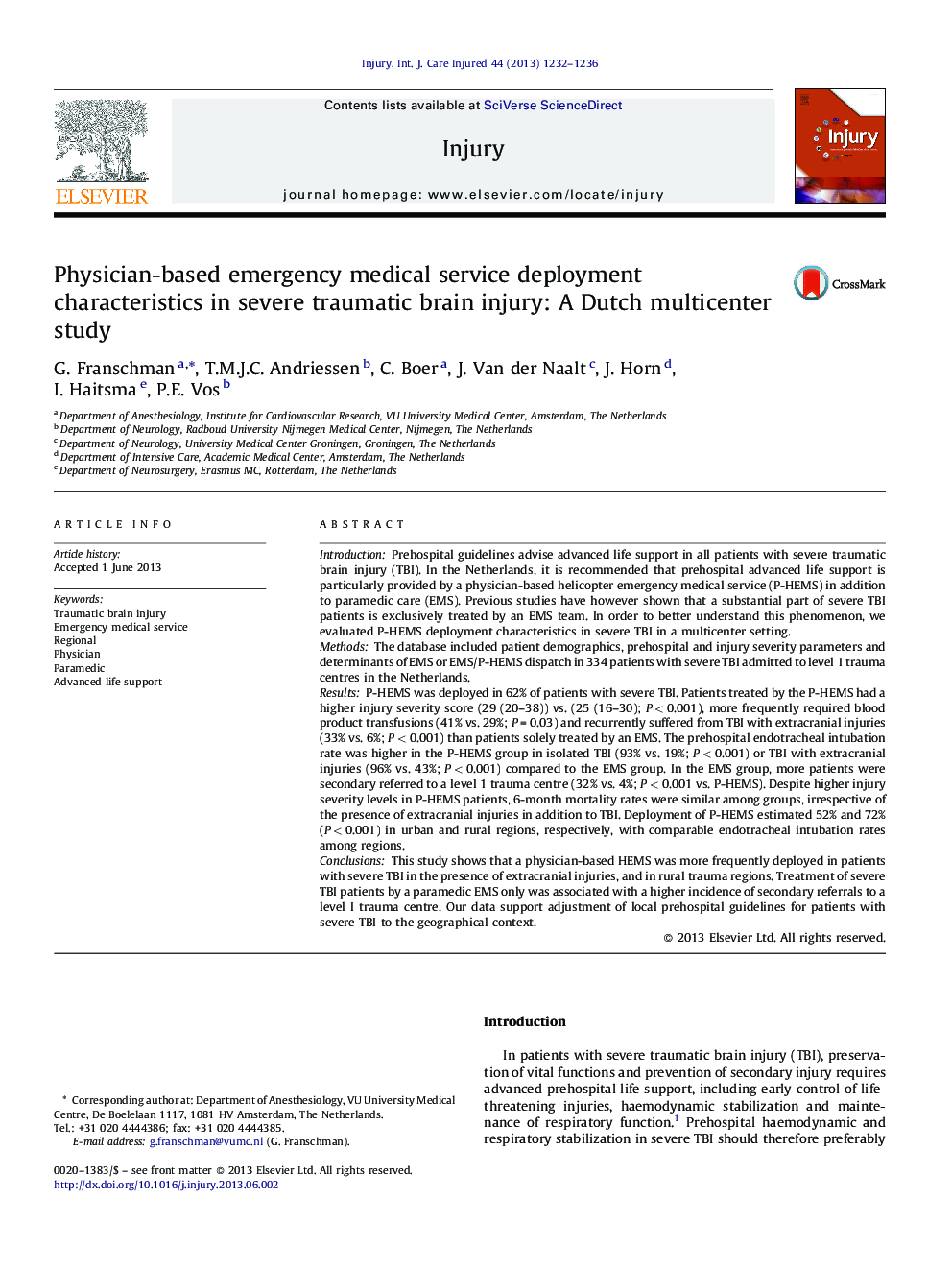| Article ID | Journal | Published Year | Pages | File Type |
|---|---|---|---|---|
| 3240394 | Injury | 2013 | 5 Pages |
IntroductionPrehospital guidelines advise advanced life support in all patients with severe traumatic brain injury (TBI). In the Netherlands, it is recommended that prehospital advanced life support is particularly provided by a physician-based helicopter emergency medical service (P-HEMS) in addition to paramedic care (EMS). Previous studies have however shown that a substantial part of severe TBI patients is exclusively treated by an EMS team. In order to better understand this phenomenon, we evaluated P-HEMS deployment characteristics in severe TBI in a multicenter setting.MethodsThe database included patient demographics, prehospital and injury severity parameters and determinants of EMS or EMS/P-HEMS dispatch in 334 patients with severe TBI admitted to level 1 trauma centres in the Netherlands.ResultsP-HEMS was deployed in 62% of patients with severe TBI. Patients treated by the P-HEMS had a higher injury severity score (29 (20–38)) vs. (25 (16–30); P < 0.001), more frequently required blood product transfusions (41% vs. 29%; P = 0.03) and recurrently suffered from TBI with extracranial injuries (33% vs. 6%; P < 0.001) than patients solely treated by an EMS. The prehospital endotracheal intubation rate was higher in the P-HEMS group in isolated TBI (93% vs. 19%; P < 0.001) or TBI with extracranial injuries (96% vs. 43%; P < 0.001) compared to the EMS group. In the EMS group, more patients were secondary referred to a level 1 trauma centre (32% vs. 4%; P < 0.001 vs. P-HEMS). Despite higher injury severity levels in P-HEMS patients, 6-month mortality rates were similar among groups, irrespective of the presence of extracranial injuries in addition to TBI. Deployment of P-HEMS estimated 52% and 72% (P < 0.001) in urban and rural regions, respectively, with comparable endotracheal intubation rates among regions.ConclusionsThis study shows that a physician-based HEMS was more frequently deployed in patients with severe TBI in the presence of extracranial injuries, and in rural trauma regions. Treatment of severe TBI patients by a paramedic EMS only was associated with a higher incidence of secondary referrals to a level I trauma centre. Our data support adjustment of local prehospital guidelines for patients with severe TBI to the geographical context.
